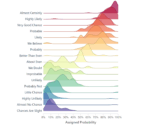Today’s transformative organizations are harnessing the unprecedented power of embedding-based applications to unlock valuable insights, deliver smarter recommendations, and enhance their business intelligence capabilities. Behind the scenes, the driving force of these sophisticated technological breakthroughs lies in the effective management and querying of vector embeddings. Choosing a suitable vector database isn’t merely a backend technicality; it’s a strategic decision that shapes how efficiently and effectively your organization can harness the power of embedding representations. At Dev3lop, we’ve helped numerous organizations make informed technology investment decisions as part of our advanced analytics consulting services. In this article, we guide technical executives and decision-makers through the essential criteria that should influence vector database selection, ensuring that your technology platform doesn’t just support your innovation—it fuels it.
Understanding Vector Databases and Their Role in Embedding-Based Applications
Before evaluating selection criteria, it’s crucial first to grasp exactly what vector databases are and why they’re increasingly pivotal in data-driven organizations today. Unlike traditional relational databases or standard NoSQL variants, vector databases specialize in efficiently handling high-dimensional vector data typically produced by machine learning models and embedding algorithms. Embeddings map complex data structures into meaningful mathematical spaces, allowing applications such as recommendation systems, content personalization, semantic search, anomaly detection, and natural language processing (NLP) tasks to exhibit exceptional intelligence and computational efficiency.
Embedding-based applications necessitate rapid similarity searches to compare, rank, and retrieve embeddings. Vector databases provide sophisticated search mechanisms, optimized indexing, and performance-oriented algorithms specifically suited to these complex requirements. Efficiently querying thousands, millions, or even billions of high-dimensional embeddings—delivering results in real-time—is made possible through these specialized databases due to their native support for approximate nearest neighbor (ANN) searches and advanced indexing strategies.
At Dev3lop, we consistently help our clients in turning business chaos into order through advanced data architecture. Understanding the critical strategic importance vector databases have is your initial step toward selecting the right technology foundation, paving your way toward enhanced innovation and competitive advantage.
Essential Criteria for Selecting the Right Vector Database
1. Performance and Scalability
In embedding-based applications, querying large-scale embedding data with speed and accuracy is paramount. Vector databases must efficiently handle comprehensive similarity searches that are computationally intensive in nature due to high dimensionality. Benchmarking performance metrics—such as latency, throughput, and query accuracy—should form an integral part of your evaluation process. Qualified databases should support indexing mechanisms such as Hierarchical Navigable Small World (HNSW), FAISS indexing, or other approximate nearest neighbor (ANN) algorithms to ensure optimal performance.
Beyond single queries, consider scalability factors. The selected database must scale horizontally or vertically, according to your organization’s evolving data storage and computation needs. Thoroughly examine real-world user cases demonstrating how candidate vector databases handle large embedding sets, parallel search requests, sustained traffic loads, and the smooth scalability of clusters and cloud deployment scenarios.
Properly assessing performance and scalability can significantly impact overall cost-efficiency. As we’ve highlighted previously, strategic investments in data infrastructures like these can be key to achieving lasting cost reductions—particularly when you’re effectively able to build data warehouses into optimized data lake environments.
2. Ease of Maintenance and Integration
When evaluating a new technology, it’s critical not only to assess initial implementation but also ongoing ease of maintenance and integration into your current data stack. Vector databases that seamlessly integrate with standard data manipulation and analysis frameworks ensure minimal disruption within your infrastructure. Look for databases supporting APIs compatible with popular programming languages, data processing libraries, and cloud-native services.
Reducing the barriers to integration allows your technical team to spend less time troubleshooting, freeing your talent to focus more strategically on innovation and analytics. At Dev3lop, we’ve extensively supported organizations with hourly consulting expertise when needed, and every successful implementation relies heavily on choosing robust, easy-to-maintain technology platforms.
To future-proof your investment, evaluate the comprehensiveness of available documentation, ease of deployment, availability of regular updates, quality of vendor support, and presence of an active, engaged user community. Vector database platforms that offer comprehensive, intuitive interfaces, clear documentation, and practical troubleshooting advice will empower your team to confidently navigate day-to-day operational complexity.
3. Data Security and Compliance Considerations
Embedding-driven database solutions must meet stringent data security criteria, especially in highly regulated sectors, such as healthcare, finance, or government. Strength in this area is not negotiable and must involve features such as encryption at rest and in transit, role-based access controls (RBAC), secure authentication mechanisms, regular security audits, SOC 2 compliance, and GDPR compliance.
A failure in data security has devastating consequences, ranging from legal financial penalties to irreparable reputational damage. Therefore, choosing a vector database with transparent security policies, clear certifications, adherence to data residency guidelines, and proof of maintaining security best practices remains an essential selection criterion.
Investing in data security is a cornerstone of strategic analytics platforms, as we have extensively detailed in our comprehensive article on properly implementing data security best practices. Vector database providers should demonstrate evidence of regular updates, responsiveness to security advisory incidents, and openness in engaging with customer requests related to data privacy and compliance requirements.
4. Flexibility to Support Complex Analytical Queries
Your selected vector database must adapt seamlessly beyond basic queries. Incorporating complex analytical scenarios, interactive data visualizations, and nuanced analytics demands flexibility. Deep integration with interactive analytical platforms, BI visualization tools, and frameworks facilitating near-real-time analytics must be a core criterion for selecting your vector database.
Providing your analytics teams and stakeholders powerful flexibility enables personalized visual storytelling and advanced analytical workflows—a critical dimension for data-centric organizations reinforcing the value and potential of embeddings during analytics processing. Check our guide to understanding the benefits of interactive data visualization to learn how powerful visual analytics can facilitate data-driven decision-making.
Additionally, many organizations today require databases capable of handling complex, real-time event processing alongside standard embedding-query capabilities. Choosing a flexible, adaptable technology stack supports both traditional and innovative event-driven analytical use cases, ensuring continued relevance and agility for your environment, as we described in our piece on strategies for reliable analytics through out-of-order event processing.
5. Total Cost of Ownership (TCO)
With any significant investment in technology, understanding the total cost of ownership—including infrastructure costs, licensing fees, deployment expenses, and ongoing maintenance—is critical. Vector database solutions vary greatly in pricing models; some employ open-source community platforms with support subscriptions, while others feature proprietary databases requiring vendor-specific services. Making an informed strategic choice involves carefully balancing costs with expected outcomes, assessing both initial and ongoing expenditures associated with your chosen vendor.
Be strategic in evaluating pricing structures—thoroughly consider potential budgetary impacts not just now but several years down the line. Factor in training and resource allocation, partner support availability, and refresh cycles necessary to maintain platform currency and operational stability. Cost management, combined strategically with robust analytics capabilities, forms a solid foundation for long-term organizational success—an insight we’ve discussed at length in our article exploring the increasing importance of data analysis in unlocking insights for success.
Making the Right Choice—Strategically and Thoughtfully
In selecting a vector database designed specifically for embedding-based applications, your decision should holistically incorporate performance, scalability, maintenance simplicity, data security compliance, analytical flexibility, and overall cost management. The ideal vector database becomes a vital strategic asset, exceeding current expectations while providing enduring returns on investment. When guided by carefully selected considerations, strategic leaders ensure the technology stack chosen supports your organization’s evolving competitive landscape and innovation aspirations.
At Dev3lop, we are dedicated to guiding clients through informed technology choices and ensuring they align with both immediate and long-term strategic business objectives. Explore our cutting-edge Advanced Analytics Consulting Services to discover how partnering with us can help secure your organization’s competitive edge through strategic analytics technology decisions.
Tags: Vector Databases, Embedding Applications, Data Analytics, Strategic Technology Selection, Data Architecture, Advanced Analytics



















